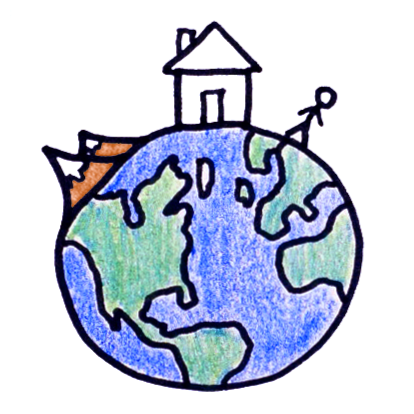2017-08-31
[public] 5.02M views, 86.2K likes, dislikes audio only
India and China have so many people today because they’re good for farming and big, but they’ve always been that way, so they’ve actually had a huge proportion of Earth’s people for thousands of years.
Thanks to the University of Minnesota for sponsoring this video! http://twin-cities.umn.edu/
If you liked this week’s video, you might also like:
- A very detailed map of world population density: https://populationexplorer.com/
- Info about world population growth: https://ourworldindata.org/world-population-growth/
CREDITS
*********
Script Writer: Alex Reich
Script Editor: Kate Yoshida
Video Illustrator: Qingyang Chen
Video Director: Emily Elert
Video Narrator: Kate Yoshida
With Contributions From: Henry Reich, Ever Salazar, Peter Reich, David Goldenberg
Music by: Nathaniel Schroeder
MinuteEarth is produced by Neptune Studios LLC
SUPPORT MINUTEEARTH
**************************
If you like what we do, you can help us!:
- Become our patron: https://patreon.com/MinuteEarth
- Our merch: http://dftba.com/minuteearth
- Our book: https://minuteearth.com/books
- Share this video with your friends and family
- Leave us a comment (we read them!)
OUR LINKS
************
Youtube | https://youtube.com/MinuteEarth
TikTok | https://tiktok.com/@minuteearth
Twitter | https://twitter.com/MinuteEarth
Instagram | https://instagram.com/minute_earth
Facebook | https://facebook.com/Minuteearth
Website | https://minuteearth.com
Apple Podcasts| https://podcasts.apple.com/us/podcast/minuteearth/id649211176
REFERENCES
**************
Eraly, A., Khan, Y., Michell, G. & Saran, M. 2008. India. DK Publishing, New York.
Gidwani, V.K., April 2017, personal communication.
Goldewijk, K.K., Beusen, A., & Janssen, P. 2010. Long-term dynamic modeling of global population and built-up area in a spatially explicit way: HYDE 3.1. The Holocene, 20(4), 565-573. https://goo.gl/BuwJLQ
Goldewijk, K.K., Arthur Beusen, Jonathan Doelman, and Elke Stehfest. "New anthropogenic land use estimates for the Holocene; HYDE 3.2.” Unpublished manuscript. https://goo.gl/z73PNr
Goldewijk, K.K., April 2017, personal communication.
Maddison, A. 2006. The World Economy: A Millennial Perspective. OECD. https://www.stat.berkeley.edu/~aldous/157/Papers/world_economy.pdf
Roberts, E., March 2017, personal communication.
Ruggles, S., March 2017, personal communication.
Stearns, P. N. (Ed.). 2001. The encyclopedia of world history: Ancient, Medieval, and Modern, chronologically arranged. Houghton Mifflin. Chicago.
Thanks also to Deepak Ray, Jamie Gerber, Emily Cassidy, and Ryan Loomis.
https://www.patreon.com/minuteearth
/youtube/channel/UCeiYXex_fwgYDonaTcSIk6w
https://www.patreon.com/minuteearth
/youtube/video/4DF94Wvtekk

